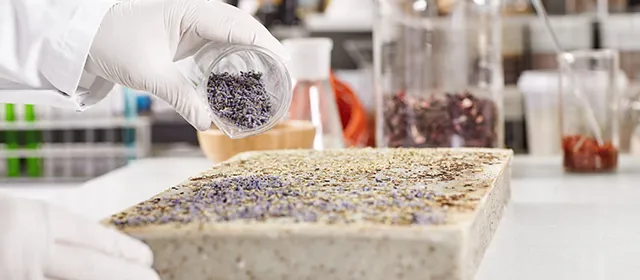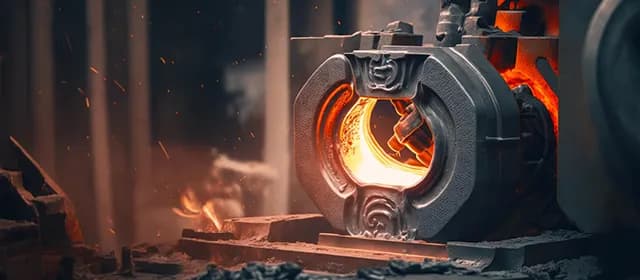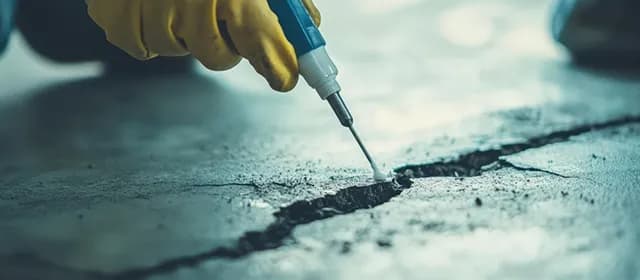Blended cements combine Portland cement clinker with supplementary cementitious materials (SCMs) to reduce greenhouse gas emissions, improve durability, and optimize performance. Innovations in nanomaterials and reactive pozzolans strengthen that paradigm by enhancing early reactivity, microstructure control, and long-term performance. This blog reviews recent advances in nano-scale additives, reactive SCMs, implementation challenges, notable commercial moves, and future research directions.
According to Kings Research, the global supplementary cementitious materials market size was valued at USD 25.59 billion in 2024 and is projected to grow from USD 27.07 billion in 2025 to USD 41.43 billion by 2032, exhibiting a CAGR of 6.13% over the forecast period.
What Are Blended Cements and Supplementary Cementitious Materials?
Supplementary cementitious materials act as partial replacements for Portland clinker and contribute to concrete’s strength and durability through latent hydraulic or pozzolanic reactions. The U.S. Geological Survey acknowledges that various secondary materials can be incorporated as supplementary cementitious materials (SCMs) in blended cements and in the cement paste in concrete (Source: pubs.usgs.gov). Conventional SCMs include fly ash, silica fume, ground granulated blast-furnace slag (GGBS), and natural pozzolans. The GGBS material forms calcium silicate hydrates and helps moderate heat evolution in large pours.
Lowering clinker fraction helps reduce the carbon intensity of cement. Some plants are investing in low-carbon cementitious material production. Ozinga broke ground in 2025 on a low-carbon cement facility slated to produce one million tons per year of lower-emission cementitious outputs.
Challenges persist: some SCMs exhibit slow early strength gain or limited reactivity under lower curing temperatures. Innovations aim to activate latent materials or inject nucleation sites to accelerate hydration kinetics.
How Nanomaterials Enhance Cement Hydration and Microstructure
Nanomaterials influence hydration, microstructure densification, crack bridging, and transport properties. Common nano-additives include nanosilica, nano-titanium dioxide, carbon nanotubes, graphene derivatives, and nanocellulose (Source: pmc.ncbi.nlm.nih.gov). Recent research explores combinations such as nano-silica and nano-TiO₂ to support sustainable performance. A 2024 review notes their role in improving strength, reducing permeability, and enhancing durability.
Nanoparticles supply additional nucleation sites for calcium silicate hydrate (C–S–H) formation, accelerate early hydration, and reduce porosity. Controlled dispersion is critical; agglomeration can degrade performance.
Cellulose and chitin nanomaterials also show promise in cement blends. These biogenic nanomaterials act as internal curing agents, mitigate shrinkage cracking, and improve rheology when properly functionalized. The recent review of new SCMs includes such nanocellulose applications as an emerging additive.
Another innovation avenue is C-S-H seeding at the nanoscale. Seeding with nano-sized calcium silicate hydrate fragments accelerates hydration, especially in blends with slow-reacting pozzolans. Mechanochemical activation or high-energy milling of pozzolanic materials (energetically modified cements) can enhance their reactivity by disrupting crystal structures and increasing surface area.
Transforming industrial residues via nanotechnology offers another path. CEMEX partnered with Carbon Upcycling Technologies to convert CO₂ and industrial residues into nanomaterials that enhance the reactivity of byproducts as SCMs. This process can increase the usable portion of industrial residues in cement blends.
Emerging SCMs and Reactive Pozzolans for Low-Carbon Cement
Reactive pozzolans may include calcined clays, volcanic ash, calcined metakaolin, biomass ashes, or tailored mineral waste streams. A recent review in MDPI outlines opportunities for novel SCMs from biomass ash, glass waste, and underutilized mineral waste. The review emphasizes the need to assess supply chain readiness, environmental impact, and reactivity.
Terra CO₂ Technology announced a commercial-scale plant producing its OPUS SCM capable of substituting up to 40 percent of Portland cement in mixes. The material is derived from silicate rock feedstocks and requires no changes to the mix design.
EnviCore secured seed funding in 2024 to scale low-carbon SCM production using recycled mineral feedstocks and claims a carbon footprint reduction of up to 30 percent relative to conventional cement. The company collaborated with Heidelberg Materials to test pilot SCM plants at recycling hubs.
Natural pozzolans such as volcanic tuffs or clays receive renewed interest. Modern characterization using Raman spectroscopy and X-ray diffraction helps quantify glass structure and reactivity of SCM candidates. One recent study compared thirteen SCM and glass samples using Raman/XRD to correlate structure and performance.
Energetically modified cement (EMC) is another direction in which high-energy milling imparts amorphization and greater reactivity to pozzolans. This process improves low-temperature reaction kinetics and can enable the substitution of clinker.
Combining Nano-Additives and Reactive Pozzolans for Optimal Cement Properties
Nanomaterials and reactive pozzolans act synergistically when nanoadditives catalyze latent (or weakly reactive) SCMs. Nanosilica can activate slag or calcined clay, accelerating early hydration in high replacement blends. The combined approach leverages SCM sustainability benefits and nanomaterial reactivity gains.
Control of nanomaterial dispersion, dosage, and interactions is critical. Overuse may increase viscosity, cause particle flocculation, or interfere with workability. Careful optimization, admixture compatibility, and dispersion techniques (surface functionalization, colloidal stability) become essential. Nanomaterials also deliver secondary benefits such as improved resistance to chloride ingress, carbonation, and microcracking owing to denser microstructures and crack bridging. This enhancement supports long-term performance of high SCM blends.
Recent studies incorporate machine learning to predict porosity and durability metrics in blends containing SCMs and nanoparticles. An ensemble learning approach predicted porosity of high-performance concrete containing SCMs with acceptable accuracy, pointing to data-driven optimization in mix design.
Key Technical, Economic, and Regulatory Challenges in Deployment
Cost and scalability represent major obstacles. Nanomaterials may command high prices relative to conventional additives. Scale-up in manufacturing and supply chain logistics is required for widespread adoption. Uniform quality and consistency of reactive SCMs and nano-additives are essential to reduce batch variability.
Durability under field conditions demands validation. Nanomaterial benefits demonstrated in labs must translate under real cure regimes, temperature cycles, and long-term aging. Some nano-materials may degrade or migrate over time; long-term stability must be demonstrated.
Regulatory and standards frameworks lag innovation. Certification bodies and codes require validated performance data, reproducibility, and safety documentation. Standard test methods for nano-modified cement blends or new SCMs remain under development. Dispersion and compatibility issues complicate scale adoption. Poor dispersion degrades performance or causes unintended effects. Interaction with chemical admixtures (superplasticizers, retarders) complicates control. Mix design protocols must evolve to accommodate nano-scale additives.
The supply chain of suitable raw materials for reactive SCMs may be constrained. Not all regions have access to high-quality clays, volcanic ash, or depleted glass. Local sourcing, logistics cost, and resource competition may limit viable scale. Environmental lifecycle studies must quantify tradeoffs. Nano-material production itself may consume energy or use chemicals; a full cradle-to-grave life cycle assessment is needed to confirm net benefit.
How Companies Are Advancing Nano-Enhanced SCMs Commercially
Cement producers increasingly invest in innovation. CEMEX’s initiative to convert CO₂ emissions and industrial residues into functional nanomaterials aligns with its long-term net-zero goals. EnviCore’s seed funding and partnership with Heidelberg Materials indicate industry validation for SCM innovation. Terra CO₂’s license agreement with Asher Materials to deploy its OPUS SCM at a commercial scale underscores the advancing readiness of innovative SCMs.
Academic-industry consortia such as Nanocem continue to support nano-scale cement and concrete research across multiple institutions. The Nanocem consortium explores emission reduction across cement manufacturing, nano-modelling, and material innovation. Startups engaged in sustainable materials are entering innovation cohorts focusing on heavy industry decarbonization. Third Derivative’s Industrial Innovation Cohorts in 2025 include cement sector startups targeting materials substitution and novel cement chemistries.
What’s Next for Nanomaterials and Reactive SCMs in Cement?
Research must push toward cost reduction, reproducibility, and field validation of nanomaterial-SCM systems. Scalable synthesis processes, green pathways for nanoparticle production, and in situ generation of nano-seed materials may reduce cost barriers. Standardized protocols, interlaboratory validation, and field trials underpin commercial acceptance. Benchmarking performance across climates, curing regimes, and mixture scales will strengthen trust in innovation.
Integration with digital tools, AI-based mix optimization, and predictive modeling may accelerate the design of nano-enhanced SCM blends. Data-driven formulation approaches can navigate multidimensional parameter space (dosage, dispersion, admixture interactions) more efficiently than traditional trial-and-error. Hybrid SCM blends combining multiple reactive pozzolans (calcined clay, slag, biomass ash) with nanomaterials represent a direction toward optimal performance and sustainability trade-offs. Tailored blends may adapt to local raw material availability.
Self-healing or smart functionality may emerge when nanomaterials or micro-capsules facilitate autogenous crack repair. Embedding functional nano-systems may produce cementitious materials that respond to damage or environmental stimuli. Nanotechnologies and SCM innovations may support circular economy strategies. Recycled glass, industrial slags, and waste mineral streams may be upgraded via nanoprocessing to reactive SCMs, closing material loops and reducing landfill waste.
Regulatory shifts or carbon pricing mechanisms may accelerate the adoption of low-carbon blended cements. As environmental mandates strengthen, performance-boosting innovations may gain a competitive advantage over traditional mixes.
Conclusion
Innovations in nanomaterials and reactive pozzolans are reshaping the blended cement landscape. Nanoparticles offer pathways to accelerate hydration, densify microstructure, and enhance durability, while novel SCM processes expand the replacement scope of clinker. Significant technical challenges remain in cost, scale, durability, and standardization. Commercial initiatives from firms such as EnviCore, Terra CO₂, and CEMEX signal movement toward industrial deployment. The confluence of materials science, digital design, and sustainability imperatives positions nano-enhanced blended cements as a crucial frontier in low-carbon construction. Continued collaboration among researchers, industry stakeholders, and standards bodies will determine whether these innovations become mainstream components of future zero-carbon infrastructure.




